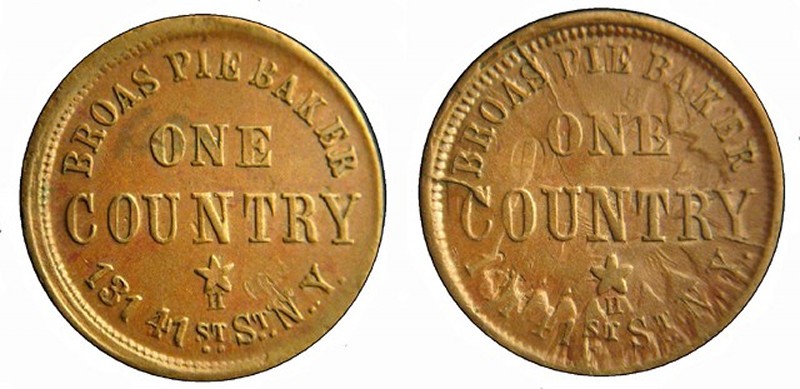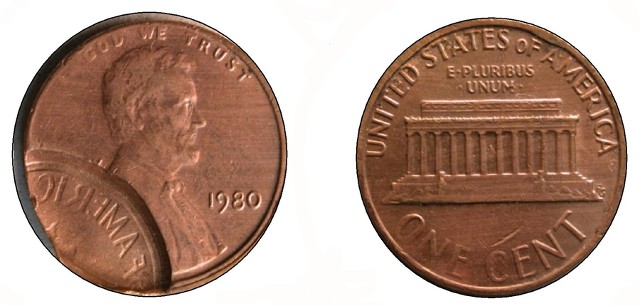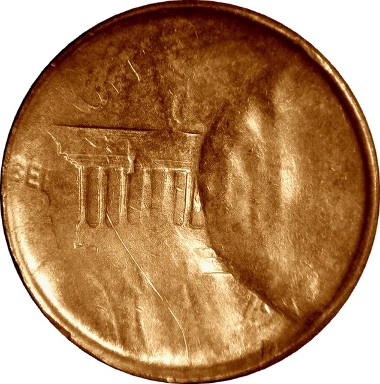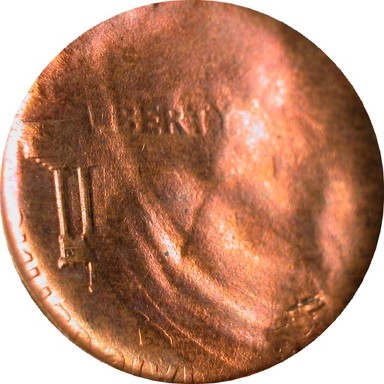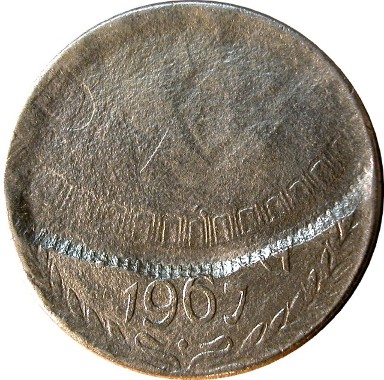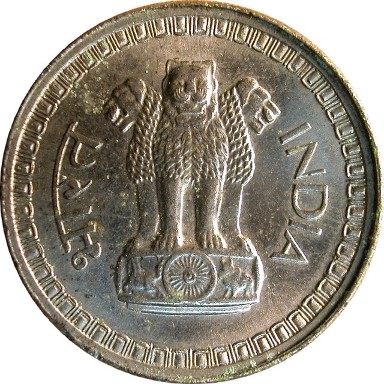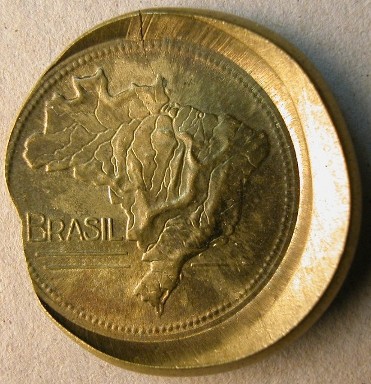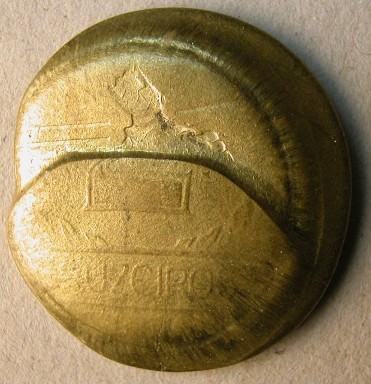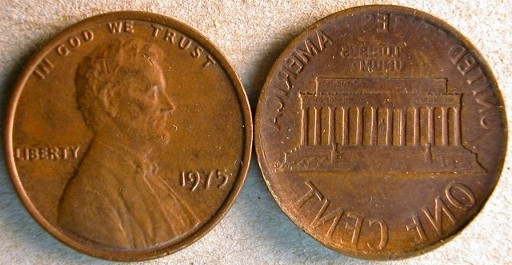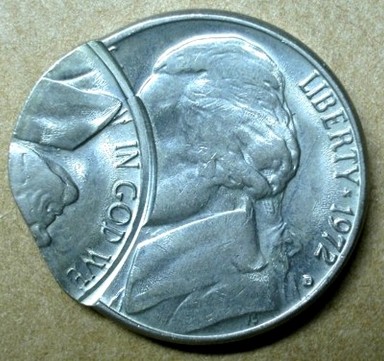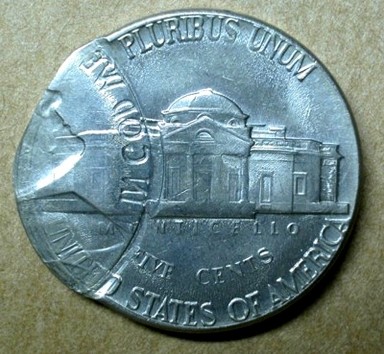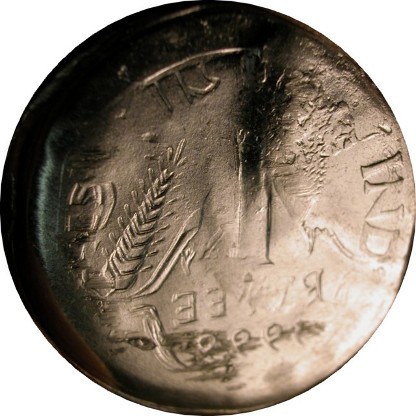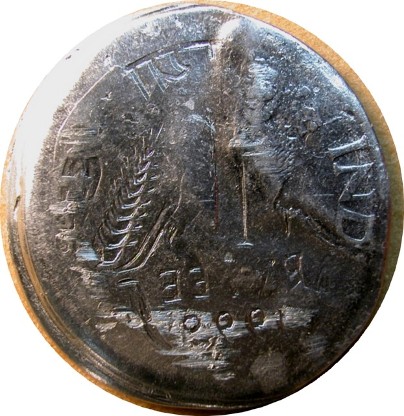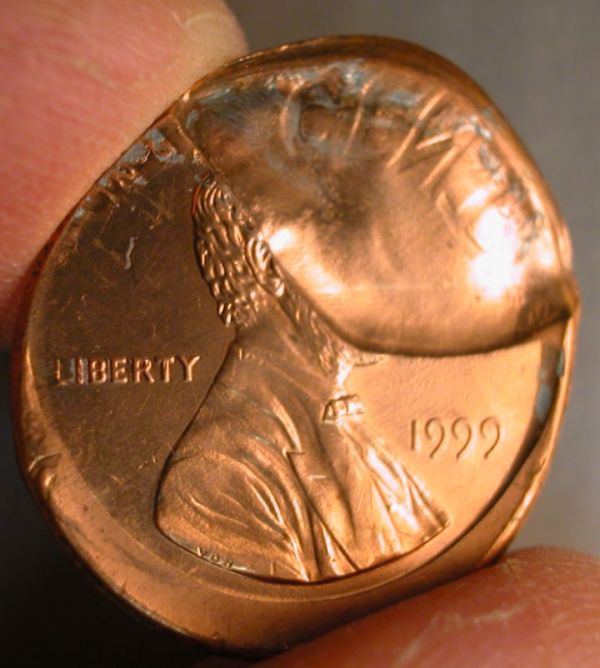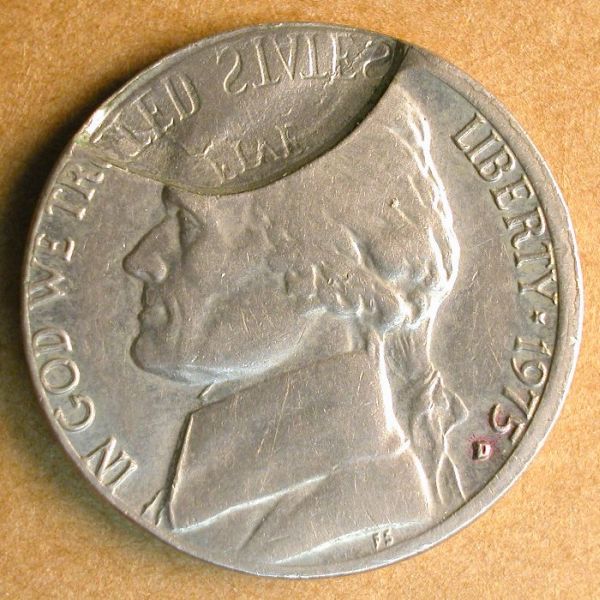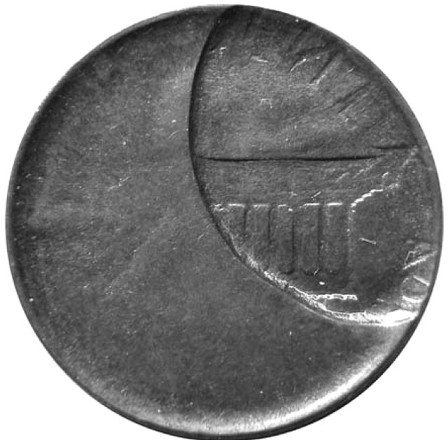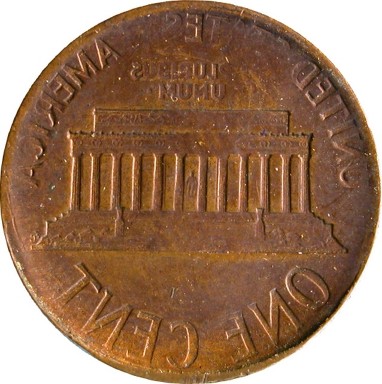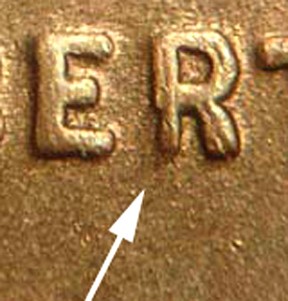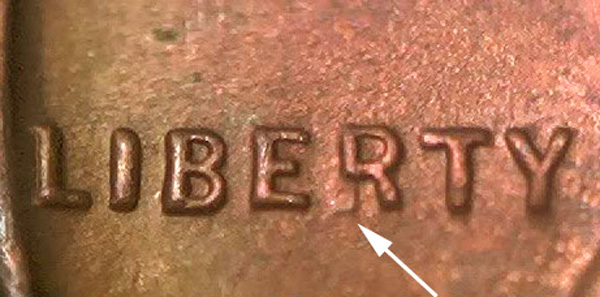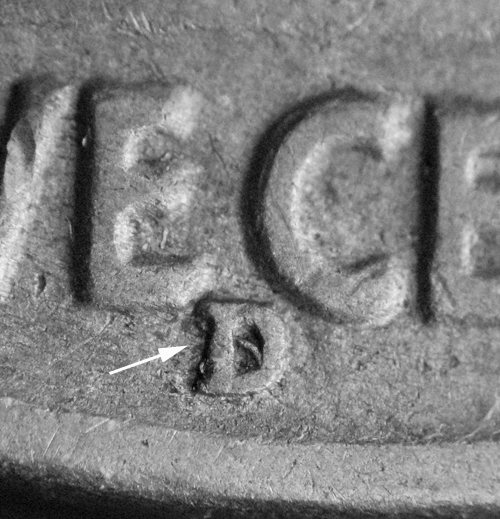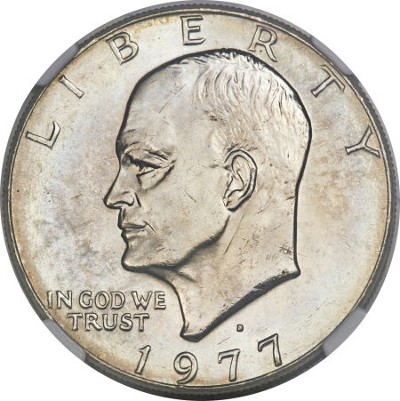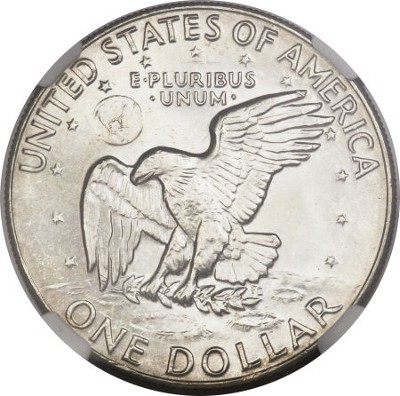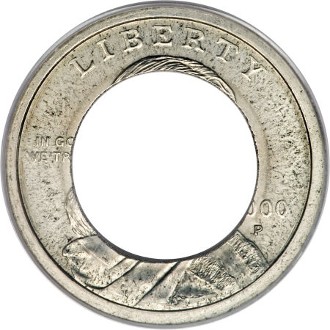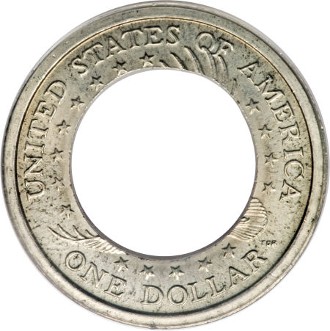PART IV:
Die Errors:
Die Cracks:
Shattered Dies:
Broas Pie Baker Token, 1863
Definition: A “shattered die” features numerous intersecting die cracks. Along with the profusion of die cracks, a
shattered die can also incorporate other forms of brittle fracture such as die breaks and retained die breaks.
A shattered die generally indicates a terminal die state, i.e, a die just short of catastrophic failure.
The 1863 Broas Pie Baker Store Token shown below was struck by a pair of shattered dies. The reverse die shattered soon after it was placed into service, but it continued to strike many planchets. After this die finally failed, the manufacturers of the token used another obverse die in its place. The original obverse die in this pairing was replaced with another obverse soon after it, too, had shattered. The image to the left shows the shattered original obverse die, while the image to the right shows the shattered reverse die typically found in this issue.
NOTE: The Civil War store card tokens of this era are unlike contemporaneous U. S. cents. The obverse face of the token is considered to be the advertisement with the store name and address. The reverse is generally some iconic figure such as Washington and Franklin, an allegorical bust of Liberty, or an Indian head.
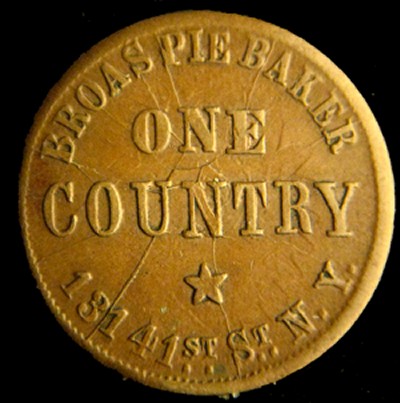
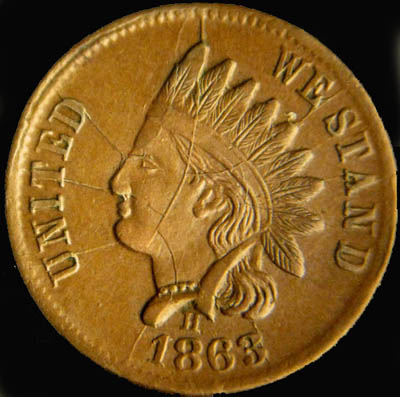
The obverse-to-obverse Broas Pie Baker store token is seen in images below. Notice the different positions of the H below the star, indicating that two different dies were used. Also note that the shattered obverse die seen above does not have the H (which may be the designer’s initial).
The obverse die to the right shows three sets of clash marks. Two sets show the Indian head (reverse design). One set depicts the obverse design (OUR COUNTRY). Presumably the clash marks of the Indian’s head occurred earlier, when the obverse die was paired with a normal reverse die.
